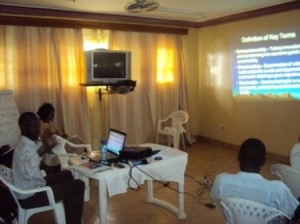By Solomon Akugizibwe
With exceptional cases of Mama FM, Kagadi Development Radio (KDR) and probably Apac FM which are Uganda’s only community FM radio stations, and a few other religious based radio stations like Radio Maria, most Uganda FM radio stations are established for purely commercial reasons.
However, commercial FM radio stations, remain the most powerful in influencing the opinions of the people because they are more widespread, very localized hence broadcasting issues related to the local environments of their target audiences.
It is therefore, important for rural FM radio journalists, to play their noble role of tactfully educating their rural audiences at the same time make profits for their bosses to ensure sustainable broadcasting because a poor audience doesn’t sustain a radio station.
Radio journalists can empower their audiences through the dissemination of educative messages which can help unlock their innovative potential for economic empowerment.
But how can rural radio journalists balance the commercial interests of the radio owners at the same time meeting the information needs of the rural folk?
Rural radio journalists need to identify the commercial needs of the radio owners and the information needs of the rural radio listeners and then think of balancing the two to achieve a sustainable rural radio broadcasting for development.
Radio owners need big audiences to fulfill their commercial needs because they are fertile grounds for attracting advertisers. But, how can radio journalists get big audiences?
Journalists need to be creative in disseminating radio messages to attract the attention of their target audiences through use of strategies like edu-entertainment because entertainment is more attractive to people’s ears than mere boring messages. Participation in radio program design and message dissemination by local audiences also helps identify and highlight local issues and look for local solutions to local problems hence making the radio programing and radio messages more relevant to the local communities leading to big audiences.
Cost effectiveness of programs is also important and this can be achieved through use of appropriate technology for audience participation and information access among others. Use of call-ins and SMS to allow people participate in development radio programs is more cost effective than bringing people to the radio studios with all the associated costs. Citizen journalism where people report their own stories than sending reporters everywhere with all the associated costs of allowances and transportation can also make a major headway in achieving radio program cost effectiveness.
Then, what are the information needs of the rural people? Since Uganda is pre-dominantly an agricultural country with the sector employing over 80 percent of the population, agricultural, health and education related broadcasting helps meet the information needs of the rural folk. Agricultural sector is also the backbone of the rural economy. The information needs of the rural people are not far from market access especially for agricultural products, weather predictions to enable proper planning for crop planting, credit facilities, health and education services among others.
Therefore, rural radio journalists can balance the commercial interests of radio owners and meet the information needs of rural people by broadcasting in a language the target audiences understand to ensure a bigger audience. The medium for participation must be appropriate to allow for citizen journalism and effective participation. SMS, letters and call-ins have proved to be the most effective. The timing of development radio programs broadcasting is also important ( a recent survey conducted by Toro Development Network in 2010 found out that morning hours of between 06:00am and 08:00am and evening hours of between 06:00 and 10:00pm are the most appropriate times to broadcast farmers programs). Rural radio journalists also need more training in information access, audience participation in broadcasting, development communication and citizen journalism.
The writer works with Toro Development Network

